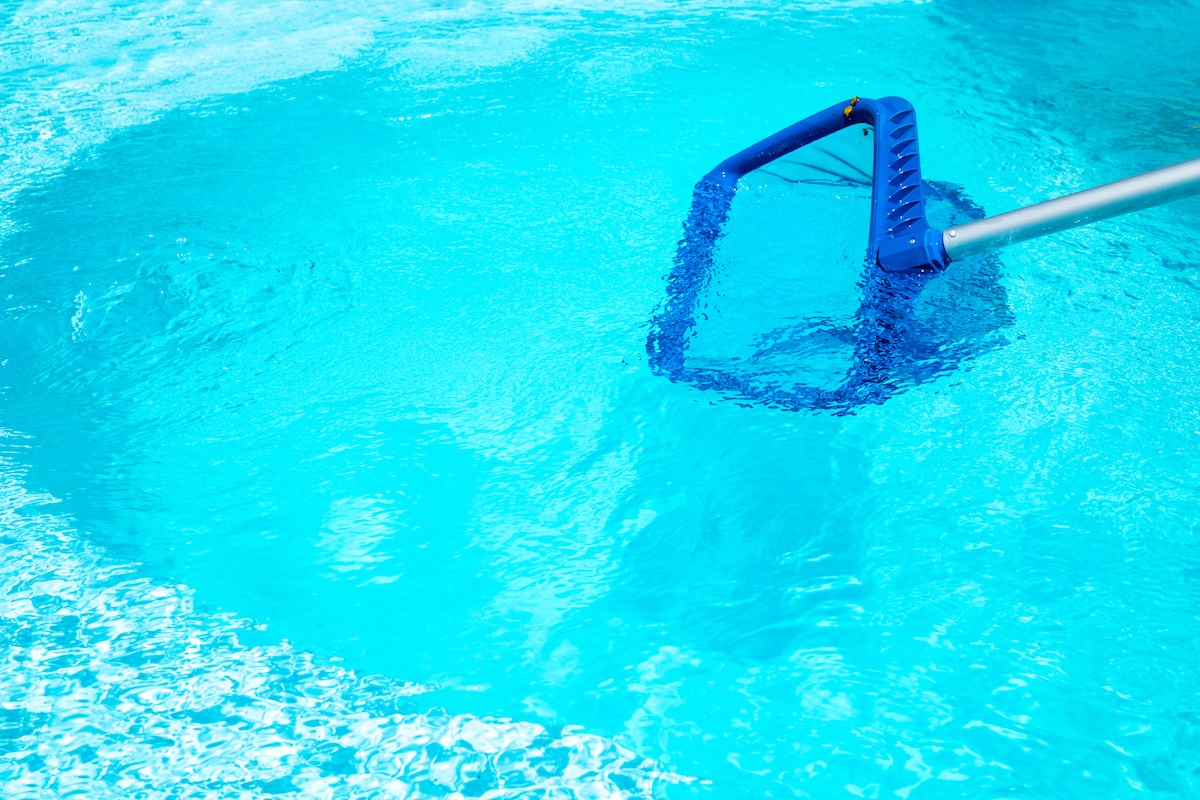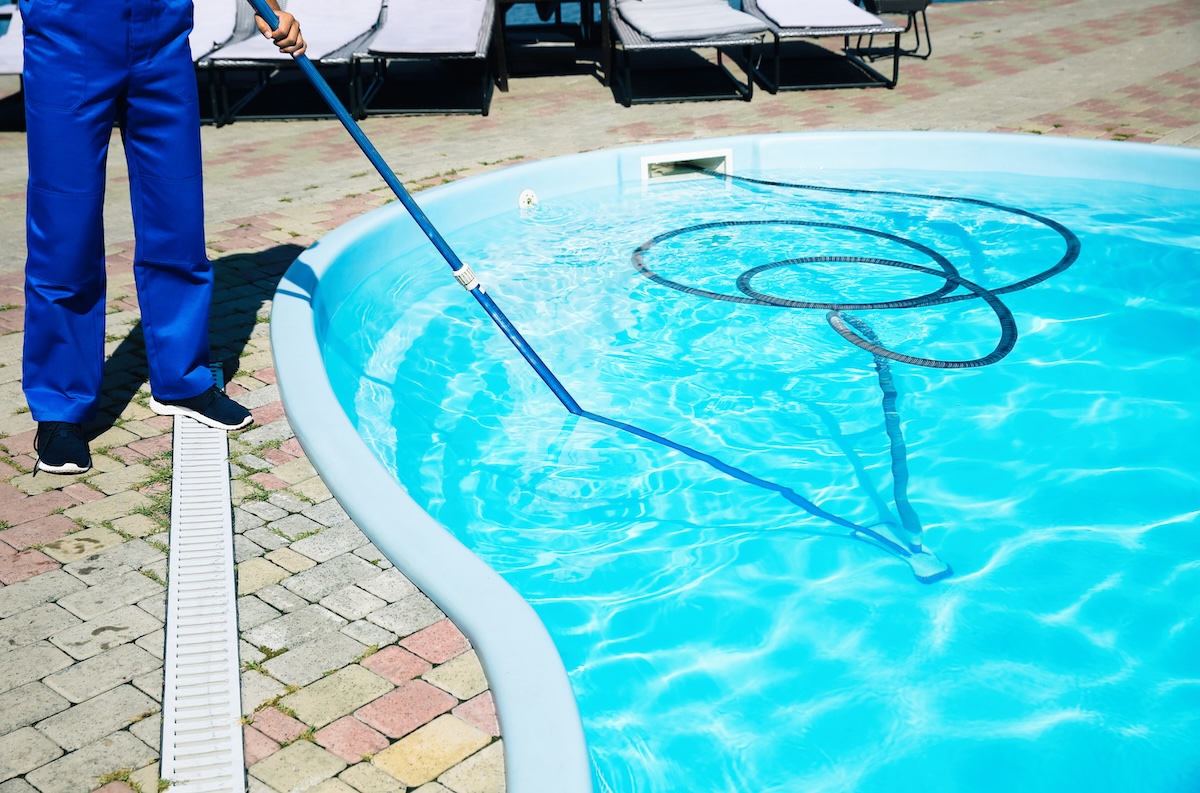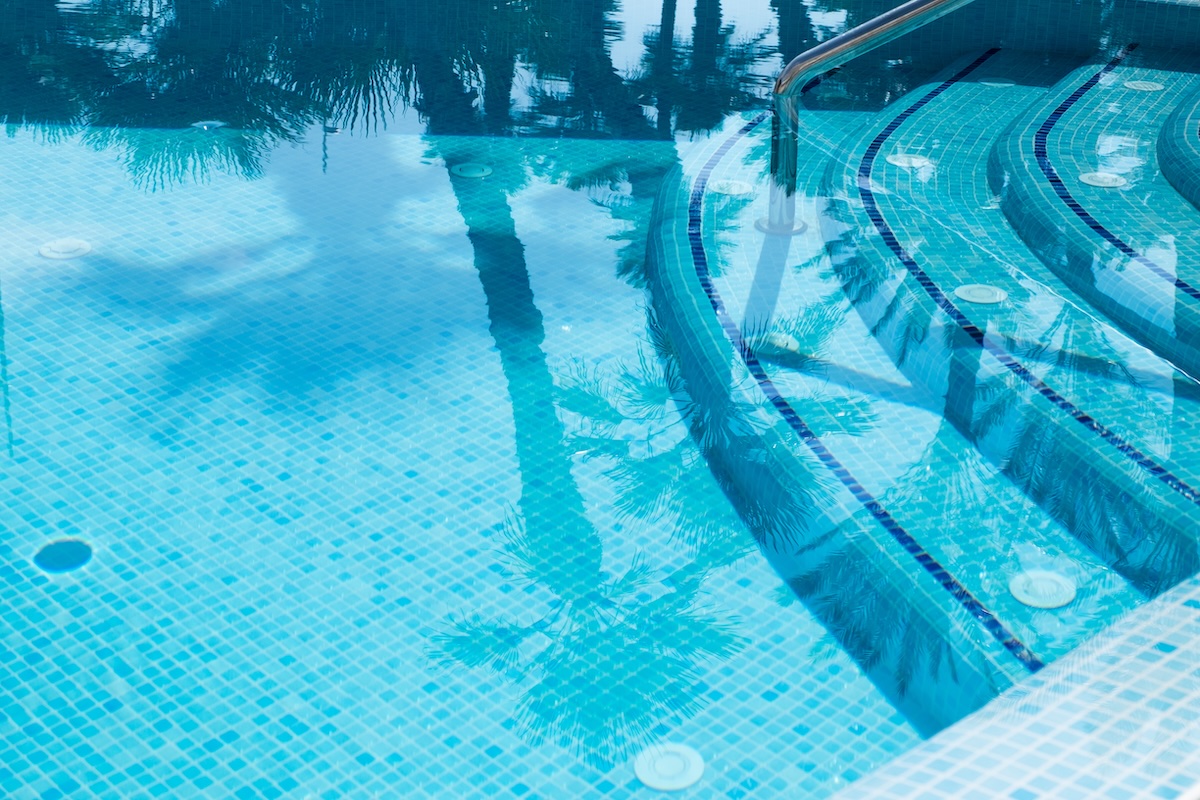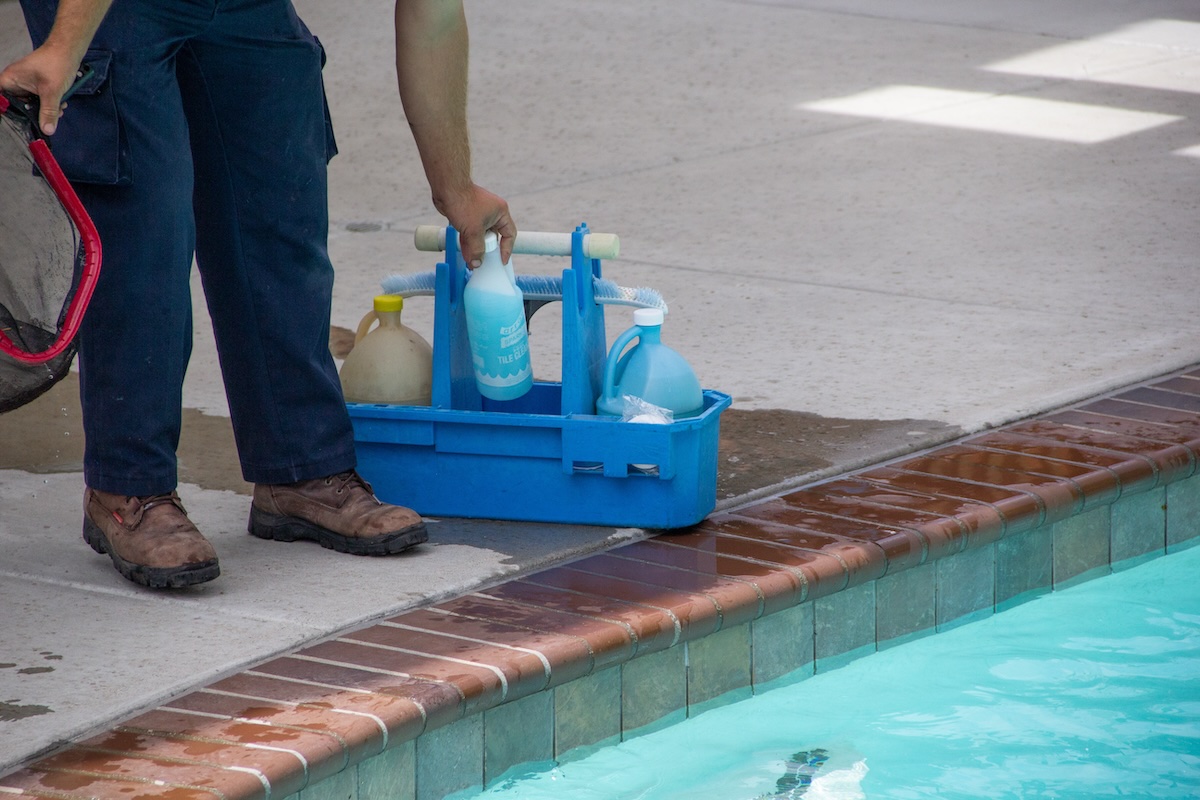Keeping your pool clean is essential to maintaining clear water, ensuring proper functionality, and extending the life of your pool equipment. But when it comes to cleaning your pool, the order in which you perform each step can make all the difference. By following a logical sequence, you can save time, maximize efficiency, and keep your pool looking its best. Whether you’re in a dry desert environment or a more humid area, these steps provide a reliable approach to pool cleaning.
Step 1: Remove Debris from the Surface
Start by skimming the surface of your pool for floating debris such as leaves, insects, or other materials. Using a pool skimmer net, you can quickly remove these before they sink to the bottom, where they’ll be harder to clean. Regular skimming also helps reduce strain on your filtration system, which is particularly beneficial in places like Las Vegas, where wind and dust storms can quickly add debris to your pool. A clean surface not only looks better but also ensures that other steps in the cleaning process are more effective.

Step 2: Clean the Pool Walls and Steps
Next, scrub the walls, tiles, and steps of your pool to remove algae, dirt, and other buildup. Choose a brush appropriate for your pool’s surface—nylon brushes work well for vinyl or fiberglass pools, while concrete or gunite pools can handle stainless steel brushes. Pay close attention to areas prone to grime, such as corners and the waterline. In sunny regions, where pools get a lot of direct sunlight, regular scrubbing is vital to prevent algae growth and discoloration. Over time, scrubbing can also help extend the life of your pool’s surfaces by keeping them free from harmful buildup.
Step 3: Vacuum the Pool Floor
After scrubbing, the debris will likely settle on the bottom of your pool. Use a vacuum—manual or automatic—to clean the pool floor. Begin at the shallow end and move toward the deep end, ensuring you cover every section thoroughly. In areas prone to dust and fine particles, such as the Las Vegas valley, you might find vacuuming more frequently helps maintain water clarity and prevents buildup. Vacuuming regularly also helps reduce the risk of clogged filters and keeps your pool ready for use at all times.
Step 4: Empty the Skimmer and Pump Baskets
Empty the skimmer and pump baskets to remove the debris collected during filtration. Regularly cleaning these baskets ensures optimal pump performance and prevents blockages. This step is especially important in areas with frequent winds, as dust and leaves can accumulate quickly. Keeping these components clean will also extend the life of your pool’s filtration system and reduce maintenance costs in the long run.

Step 5: Check and Backwash the Filter
The filter is essential for maintaining clean water, so inspect and clean it regularly. If you have a sand or DE (diatomaceous earth) filter, backwash it to flush out accumulated debris. Cartridge filters should be rinsed with a hose. High dust areas may require more frequent attention to your filter’s pressure gauge; if it rises 8-10 psi above normal, it’s time for cleaning. A well-maintained filter not only improves water clarity but also ensures that your pool’s circulation system works efficiently.
Step 6: Test and Adjust Water Chemistry
Balanced water chemistry keeps your pool safe and comfortable. Use a testing kit to check pH levels, chlorine, alkalinity, and calcium hardness. The ideal pH is between 7.4 and 7.6, and chlorine levels should remain between 1 and 3 parts per million (ppm). In places like Las Vegas, where water hardness is naturally high, keeping an eye on calcium levels is crucial to prevent scale buildup on your pool surfaces and equipment. Properly balanced water also helps prevent corrosion, algae growth, and skin irritation for swimmers.
Step 7: Shock the Pool as Needed
Sometimes, your pool will require shocking to eliminate contaminants like bacteria or algae. This involves adding a high dose of chlorine or non-chlorine shock to the water. Shocking is particularly important after heavy pool use or following a dust storm. Hot and dry climates increase evaporation, concentrating contaminants and making this step necessary more often. Regular shocking keeps your water fresh, clear, and safe for everyone to enjoy.
Step 8: Run the Pump and Circulate the Water
Run your pool pump to circulate the water after cleaning and chemical adjustments. This step ensures that all areas of the pool receive the right chemical balance and that particles are filtered out. In hotter climates, running the pump for longer periods can help prevent algae growth and maintain clear water. Proper circulation also ensures that any added chemicals are evenly distributed throughout the pool.

Step 9: Cover the Pool (Optional)
If you’re not using the pool for a while, consider covering it. This reduces debris accumulation and evaporation—especially important in desert climates like Las Vegas, where water conservation is a priority and evaporation rates are high. Pool covers can also help retain heat, making your pool more comfortable to use when temperatures drop at night.
Final Thoughts
Cleaning your pool in the correct order ensures efficiency and keeps your pool inviting, safe, and sparkling year-round. Whether you’re dealing with dry desert conditions or a more humid environment, following these steps will help you maintain a clean and healthy pool. Consistent maintenance prevents long-term issues, saving time and money while allowing you to enjoy your pool to the fullest. Taking the time to clean your pool properly not only enhances your swimming experience but also protects your investment for years to come.

